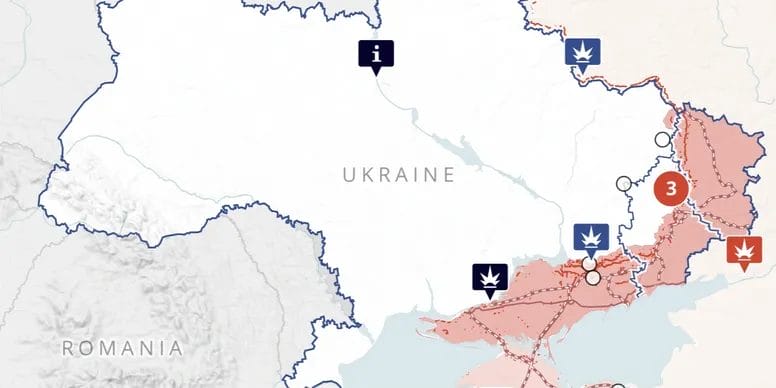
On 24 February 2022, Russian troops formally begun the invasion of Ukraine, eight years after the illegal annexation of Crimea, which had been “approved” by a manipulated referendum among the local population. Vladimir Putin wrongly thought that this could be a “blitzkrieg,” perhaps forgetting that even the German “original” in the 1940s didn’t work. In fact, the attempt to conquer Kiev and decapitate the Ukrainian government within days – and likely eliminate its president Vladimir Zelensky, in what was labelled at the time as “operation Z” – miserably failed.
The resistance of the Ukrainian troops, who were better prepared than their Russian counterparts and had immediate support from Western countries, was able to push back the initial Russian offensive. Within months, Russia had to change its objectives, and focus only on the south-eastern regions of Donetsk, Luhansk, Zaporizhzhia, and Kherson, which were formally annexed to the Russian Federation after fake referendums.
In the spring and summer 2023, the long-awaited Ukrainian counter-offensive began, but its results have been underwhelming. The Ukrainian troops managed to push back the Russian army only to a limited extent, while in effect giving it time to re-trench and further in-trench in the southern-eastern regions where it was already present. In November 2023, the Ukrainian general Valerii Zaluzhnyi had to admit that the war was a “stalemate”. The last couple of months, in which winter has led to a relative pause in the fighting, have seen Russian troops making some progress, for example conquering the strategic city of Avdiivka, after the Ukrainian army “withdrew to preserve soldiers’ lives.”
Western support to Ukraine has been large, and unprecedented for a non-NATO country to receive. The largest contributors have been the US (USD 74bn in total, including military, financial and humanitarian aid), the EU (with over EUR 82bn in overall aid, especially financial) and the UK, with GBP 12 billion pledged, of which GBP 7.1 is military assistance.
The EU has recently approved another package of €50 billion of reliable financial support for Ukraine until 2027, although the gap between EU commitments and allocations remains very large (€144 billion committed vs. €77 billion allocated). Among the Eurozone countries, Germany has been by far the largest donor, with over EUR 20bn in aid approved. A few days ago, the US Senate has approved an additional USD 60bn package for Ukraine, but this still needs to receive approval from the House of Representatives, where the majority is controlled by sceptical Republicans.
Where do we go from here? In theory, given the stalemate, this could be a favourable period for an agreement between the two sides. Like any agreement, it would be costly for both Russia and Ukraine, but could be effective. Ukraine would have to give up the 17% of the territory that Russia has conquered, and from which Russian troops would be hard to remove. In exchange, Ukraine would enter NATO immediately, and possibly also the EU. That way, Putin will have no incentive to re-start the war a couple of years from now, as he would likely do if an interim agreement was signed but Ukraine were not to enter NATO.
However, Putin has the option of waiting. If, in November 2024, Donald Trump is re-elected President, Putin knows that he will not provide further military aid to Ukraine, thus allowing Russian troops to “finish the job.” Given Trump’s recent declarations on NATO – namely that the US may withdraw from it, or would not assist countries that don’t pay their 2% of GDP contribution – even if Ukraine were to enter NATO in exchange for part of its territory, this may not represent a stable equilibrium. Given these premises, the war is likely to last for at least another year.